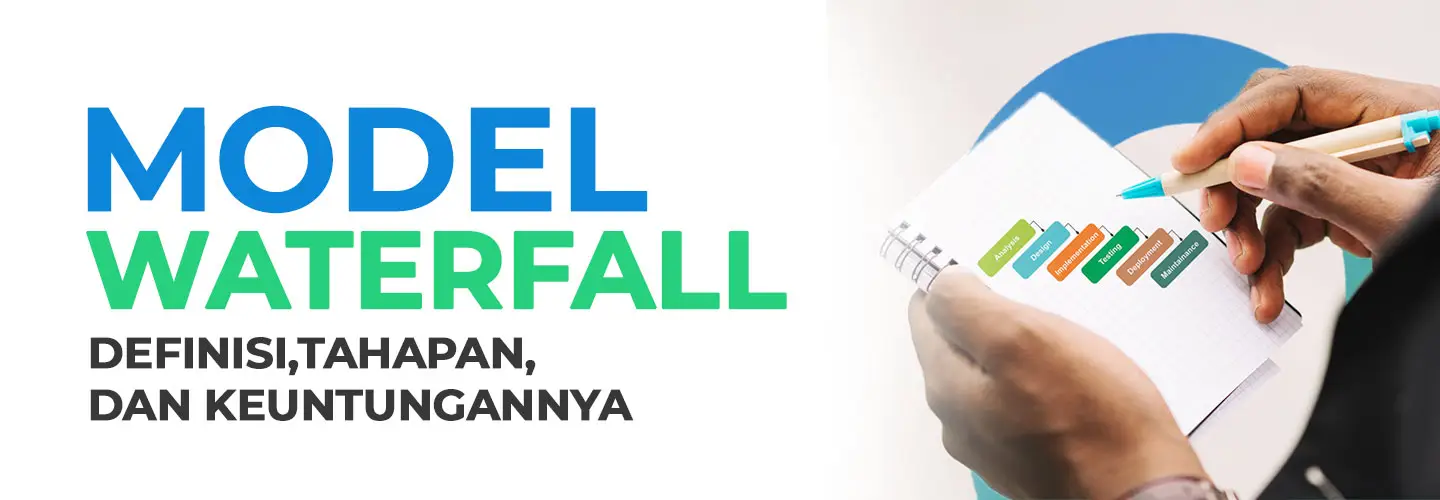Waterfall Model: Definition, Stages and When to Do It

The waterfall model is one of the methodologies developed in the creation of applications or software that is popular because of its effectiveness. This model offers a clear structure and allows the development team to move through linear and well-defined stages.
Although there are currently many new methods that are more flexible, the waterfall model remains relevant. Especially in situations where stability and predictability are top priorities.
This article will explain the waterfall model in full. Starting from the definition, stages, and when is the right time to do it.
Definition of the Waterfall Model
The name "Waterfall" comes from the workflow of this model which resembles a waterfall.
This means that in the waterfall model each stage flows linearly to the next stage without any backtracking or repetition. This means that before the development team can proceed to the next stage, the stage being worked on must be completely completed.
The waterfall model is a method first introduced by Winston W. Royce in 1970. This model allows the software development process to be carried out sequentially, from the planning stage to the implementation stage.
In the Waterfall model, each stage of development must be completely completed, before the next stage begins. This means that each stage produces output that will become input for the next stage.
Although this model has received a lot of criticism for its rigidity, the waterfall model remains a relevant choice. Especially for projects with stable and unchanging requirements.
Stages of the Waterfall Model
The waterfall model is often the choice for projects where needs and goals have been defined from the start. Here are the stages in the waterfall model to allow for a more controlled development process.
Requirements
The first stage in the waterfall model is the gathering and analysis of requirements. At this stage, software developers work with stakeholders to understand and document all system requirements.
The resulting requirements document will serve as the basis for the entire subsequent development process. This is where it is important to be precise in identifying requirements, because changes after this stage can have a significant impact on development time and cost.
System Design
Once the system requirements are clearly defined, the next stage is system design. This design includes the system architecture, database design, user interface, and other required components.
The goal is to provide a technical description of how the system will work. This stage also ensures that all identified needs can be met through this design.
Implementation
At the implementation stage, developers begin translating the system design into program code. Each software module is built, tested separately, and then integrated with other modules to form a complete system.
This stage is often the most time consuming, especially if the project being worked on is large in scale and high in complexity.
Integration and Testing
After all modules have been implemented, the integration and testing stage is carried out.
At this stage, the modules that have been developed are combined into a single system unit. After that, it is tested to ensure that everything works according to the specified needs.
This testing includes functional tests, performance tests, security tests, and other tests according to the system specifications.
Deployment
Once the system has successfully passed the testing phase, it is ready to be implemented into the production environment. This phase involves software installation, data migration, and end-user training.
During the launch, the system is monitored to ensure that no major problems arise and that users can operate the system smoothly.
Maintenance
The last stage in the waterfall model is maintenance. During this stage, the system that has been launched will continue to be monitored and maintained to ensure that it continues to function properly.
If any problems or bugs are found, fixes will be made. Maintenance also includes software updates and adding new features according to user needs.
When is the Right Time to Use the Waterfall Model?
The waterfall model is most appropriate for projects whose needs have been determined and are not expected to change during the development process. This usually occurs in situations where the project has:
- A limited scope.
- The technology used is mature.
- The risk of change is minimal.
Examples of projects that are suitable for the waterfall model include software development for industries with high compliance requirements. For example, in the healthcare, financial, or government sectors, where every step must be well-documented and rigorously tested.
This model is also effective for projects with tight deadlines and fixed budgets. This is because major changes midway can often disrupt the overall schedule and costs.
Although often considered outdated, the waterfall model still has a place in software development. Especially for projects with stable and well-defined requirements.
Overall, although this method has limitations in terms of flexibility, its main strength lies in its ability to fully control the development process.
The waterfall model is just one of two popular models in project management. Learn how to practice it in organizations by following the Project Management 101: Waterfall and Agile program from prasmul-eli.
In two days of training, this ISO 9001:2015 certified program has the following ten discussions:
- Project Management Fundamental
- Define Project Objective
- Develop Scope of Work
- Develop Project Schedule
- Manage Risk
- Introduction to Agile
- Agile Mindset
- Various Agile Practices
- Deep Dive Scrum Framework
- Simulate Sprint
Register yourself now through the following link!
